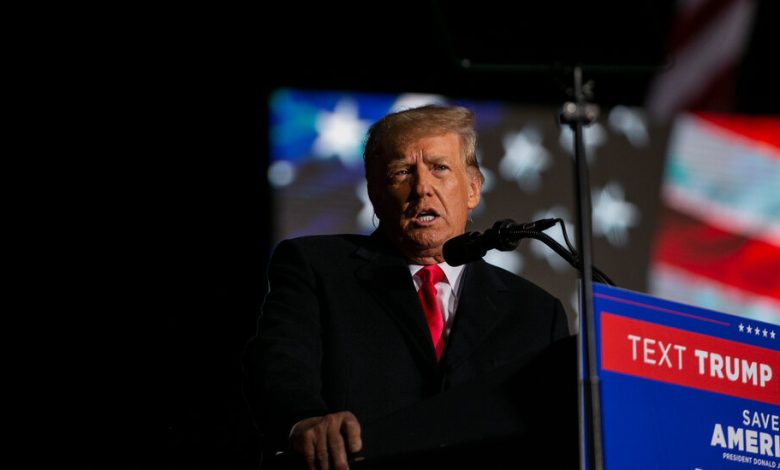Justice Dept. Examines Emails from Trump Lawyers in Fake Elector Inquiry

Federal prosecutors have examined more than 100,000 documents seized from the email accounts of three lawyers associated with former President Donald J. Trump in a continuing investigation into the roles they played in a wide-ranging scheme to help Mr. Trump overturn the results of the 2020 election, according to court papers released on Friday.
The material came from email accounts belonging to John Eastman, who helped devise and promote a plan to create fake slates of pro-Trump electors in states that were actually won by Joseph R. Biden Jr., and two former Justice Department lawyers, Jeffrey Clark and Ken Klukowski, who have faced scrutiny for their own roles in the fake electors scheme, the papers say.
As part of their inquiry, federal investigators in Washington obtained a search warrant for the three men’s email accounts in May and the following month seized their cellphones and other electronic devices. The court papers, unsealed by Beryl A. Howell, the chief judge in Federal District Court in Washington, revealed for the first time the extent of the emails that investigators had obtained.
The court papers, which emerged from a behind-the-scenes review of the material for any that might be protected by attorney-client privilege, said little about the contents of the emails. But they noted that each of the men was in contact with a leader of the far-right House Freedom Caucus, Representative Scott Perry, Republican of Pennsylvania, whose own phone was seized in August as part of the investigation into the fake elector scheme.
Reviewing seized materials for any that might be privileged is a common step in criminal investigations — especially in sensitive ones targeting lawyers. The review of the emails in this case occurred over the summer and was conducted by a team of prosecutors code-named “Project Coconut” that was walled off from the prosecutors running the main investigation, according to a person familiar with the matter.
Understand the Events on Jan. 6
- Timeline: On Jan. 6, 2021, 64 days after Election Day 2020, a mob of supporters of President Donald J. Trump raided the Capitol. Here is a close look at how the attack unfolded.
- A Day of Rage: Using thousands of videos and police radio communications, a Times investigation reconstructed in detail what happened — and why.
- Lost Lives: A bipartisan Senate report found that at least seven people died in connection with the attack.
- Jan. 6 Attendees: To many of those who attended the Trump rally but never breached the Capitol, that date wasn’t a dark day for the nation. It was a new start.
Mr. Eastman, a professor of constitutional law, has long been a focus of the Justice Department’s efforts to unravel the fake elector scheme, which involved a broad array of characters, including pro-Trump lawyers, White House aides and numerous local officials in key swing states around the country.
Mr. Eastman has also been at the center of a parallel inquiry run by the House select committee investigating the Jan. 6, 2021, attack on the Capitol, which has accused him of conspiring with Mr. Trump to defraud the United States and obstruct the final certification of the 2020 election.
Encouraged by Mr. Perry, Mr. Trump considered then abandoned a plan in the days before the Capitol attack to put Mr. Clark in charge of the Justice Department as acting attorney general.
At the time, Mr. Clark was proposing to send a letter to state officials in Georgia falsely stating that the department had evidence that could lead Georgia to rescind its certification of Mr. Biden’s victory in that key state. The effort to send the letter was cut short by Mr. Clark’s superiors.
Mr. Klukowski, who briefly served under Mr. Clark at the Justice Department and had earlier worked at the White House budget office, helped Mr. Clark draft the letter to state officials in Georgia. While working at the department, he was also in contact with Mr. Eastman, according to evidence presented by the Jan. 6 House committee.
According to the newly unsealed papers, Mr. Klukowski sent Mr. Perry an email eight days after the election with a document attached titled “Electors Clause/The Legislature Option.” The document outlined an argument central to the fake elector scheme — namely, that “the Constitution makes state legislatures the final authority on presidential elections,” the court papers said.
Mr. Eastman’s emails to Mr. Perry suggest that the two men traded phone calls in the weeks leading up to Jan. 6. The court papers note that Mr. Clark exchanged several emails with Mr. Perry in February 2021, after the Capitol was stormed, but the descriptions of their contents were redacted.
The papers also say that investigators found a draft of Mr. Clark’s autobiography in his emails, tracing his life from “growing up deplorable in Philadelphia” to working in the Justice Department. An outlined portion of the draft provides a “detailed description” of a previously disclosed meeting that Mr. Clark had on Jan. 3, 2021, with Mr. Trump and two top Justice Department officials at which they “discussed Clark’s draft letter” to the officials in Georgia.





